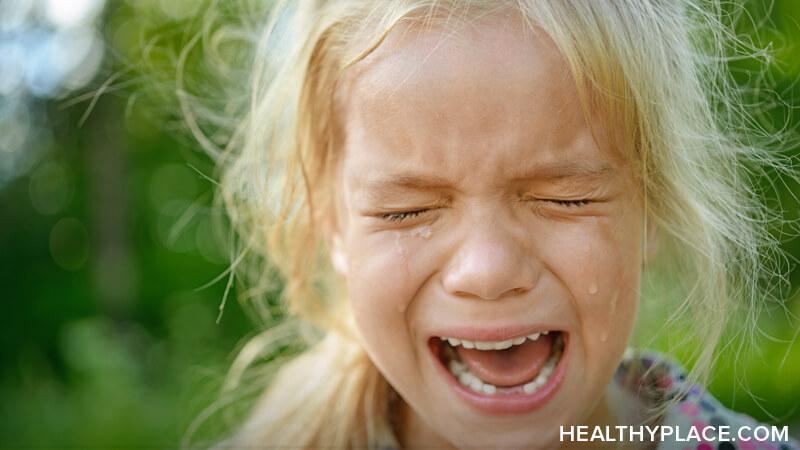Strategies for Self-Regulation in Children with DMDD

Can you teach self-regulation to children with disruptive mood dysregulation disorder (DMDD) when the inability to self-regulate emotions is the hallmark of the disorder? Anything and everything seems to trigger emotional meltdowns. What can we do as parents and caregivers, especially when we feel so frazzled ourselves? A few strategies for teaching self-regulation for children with DMDD do exist.
What Is Self-Regulation for Children (or Anyone Else)?
Put simply, self-regulation is the ability to manage emotions on our own. Negative emotions are especially hard to manage, even for some of us parents. Our kids with DMDD simply can't manage them. When encountering tough choices, they can't figure out which one to focus on, or how to respond to them. Problem-solving is overwhelming. Most of us, when we hear the word "no," talk ourselves through the disappointment. We run into a barrier and can pause long enough to find our way around it. Children with DMDD lose control in these situations and have outbursts.
This doesn't mean we never say no to our children with DMDD. Neither does it mean that we try to avoid barriers, upsets, or unpleasantness. Negative emotions are a fact of life and we need to help our children navigate them in a healthy, constructive manner.
Teaching Self-Regulation to Children
From the moment we're born, we rely on others to help us cope. A newborn never self-regulates, for instance, and they're not expected to. Parents feed, clothe, comfort, and soothe based on their baby's cries. Toddlers are more independent, but they still need cues and reminders from caregivers. Preschoolers can self-regulate at times, but they need us nearby in case of emergency (How Kids Grow: Defining Normal Behavior).
By the time a child hits my son's age (nearly 11 years old), he should be able to internally regulate positive and negative emotions. However, if your child, like mine, also has DMDD, he's way behind in this development. In many ways, my son's emotional responses are still like a toddler's. He can sometimes self-regulate but, generally, he needs the guidance of parents and teachers to remind him how to manage complicated emotional situations. He needs outside influences to work him out of a major outburst or redirect him before that outburst hits.
As parents, remember that this isn't a "bad" thing. After all, do any of us truly self-regulate without help? Even when we're alone managing extremely intense situations, we may cope by remembering the support we have elsewhere. We know our spouses, or our best friends will let us vent and give us hugs when we get through the tough situation. As parents, we should let go of the idea that our children will never rely on others for help with emotions. We just need to help them keep calm enough not to self-destruct before they find help with life's tough situations.
Breathing Strategy for Self-Regulation in Kids with DMDD
Please note that different strategies work for different kids. Parents have to experiment to find what works, and what works one time may not work another. With that in mind, the below video gives an example of one way to help a child self-regulate. It's based on our most basic necessity: breathing. Most of us, when angry or anxious, simply forget to breathe. Teaching kids to breathe is a tool they can store in that overall toolbox of coping skills that they'll hopefully use down the road.
APA Reference
David, M.
(2018, May 17). Strategies for Self-Regulation in Children with DMDD, HealthyPlace. Retrieved
on 2025, December 18 from https://www.healthyplace.com/blogs/parentingchildwithmentalillness/2018/5/self-regulations-strategies-dmdd